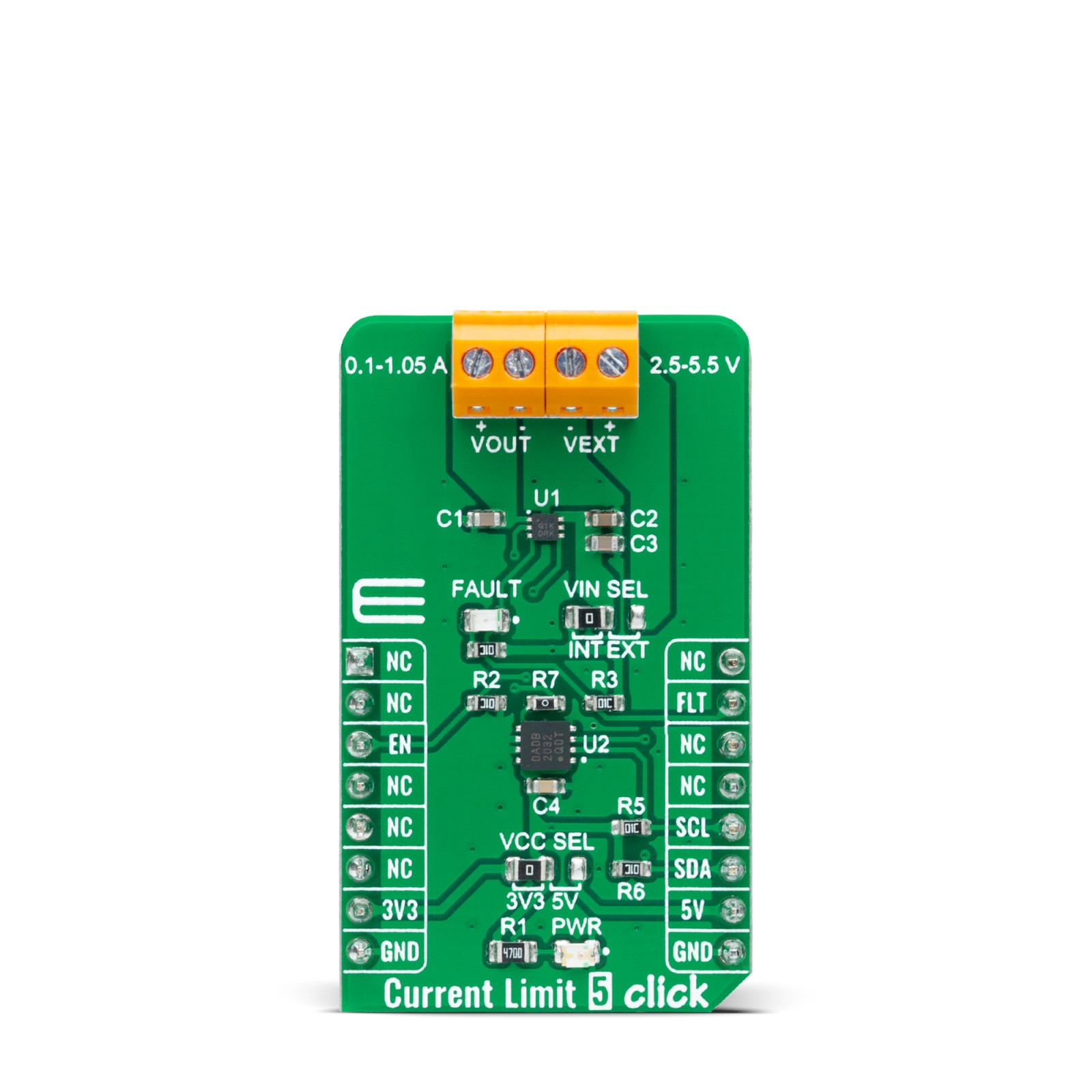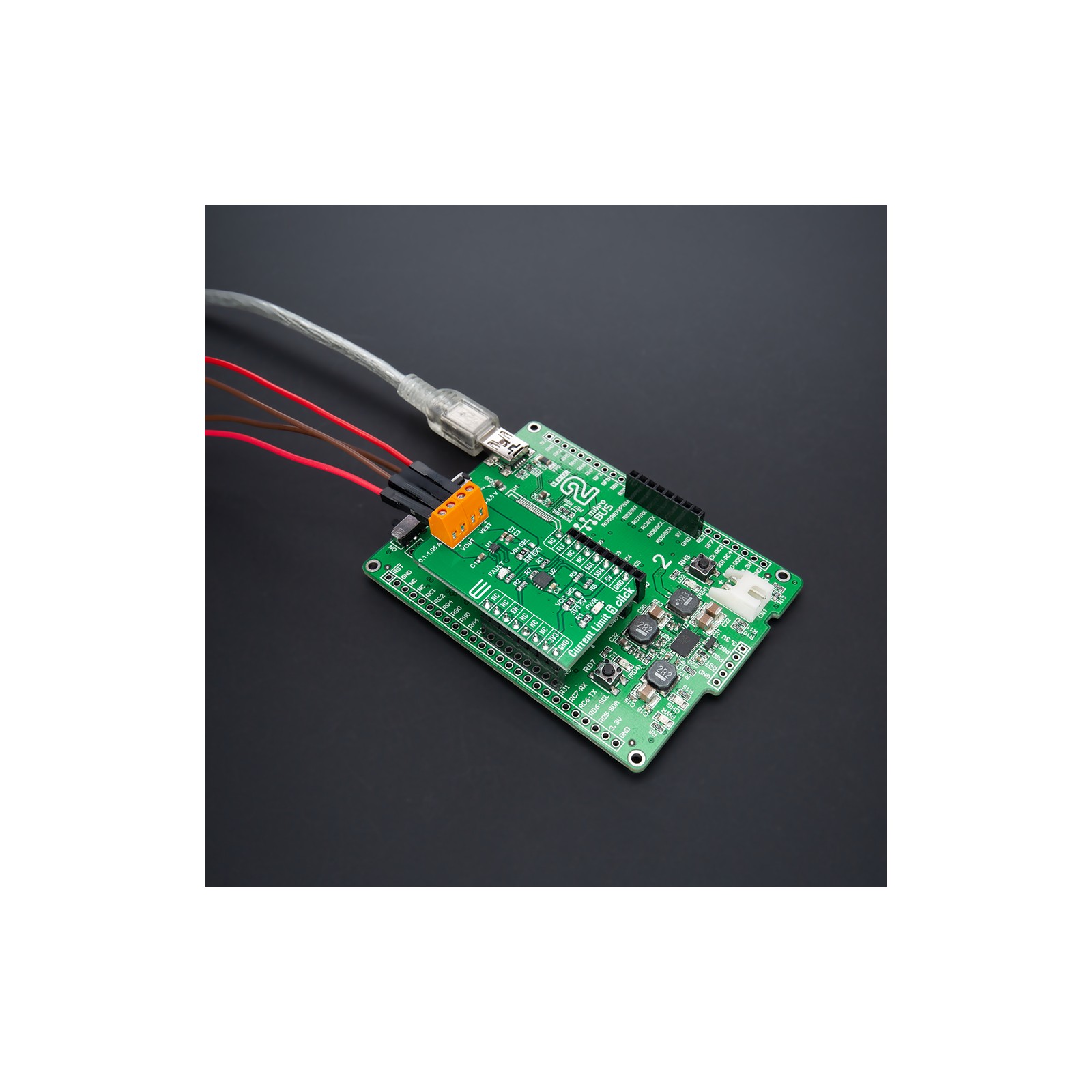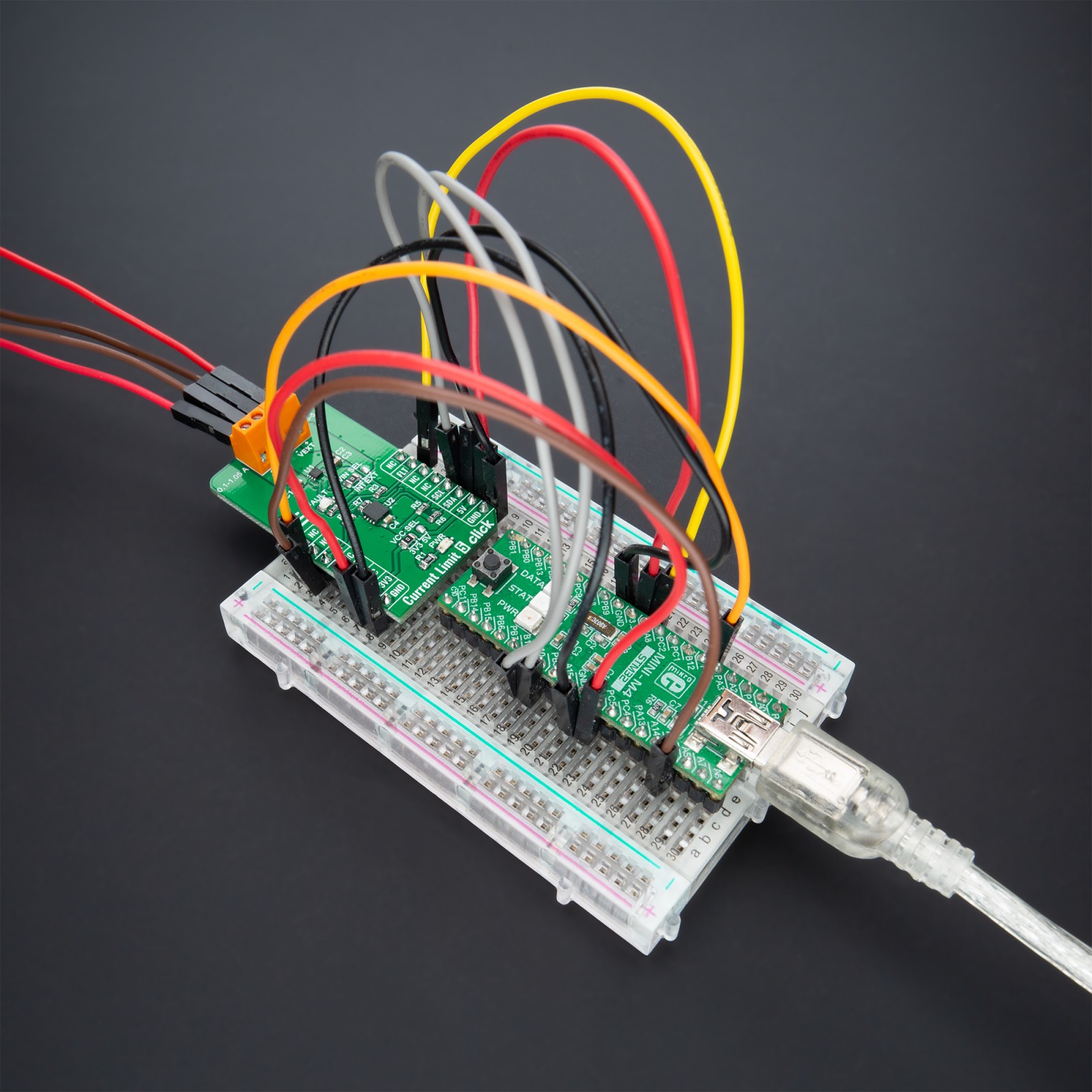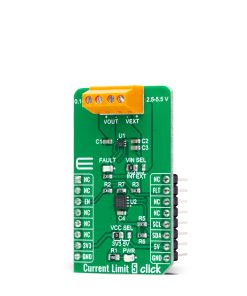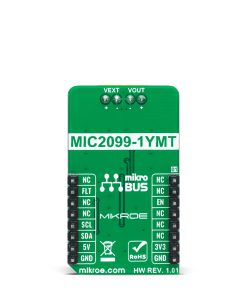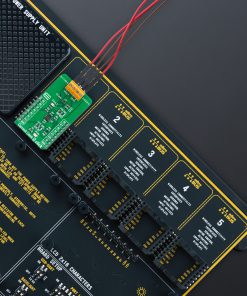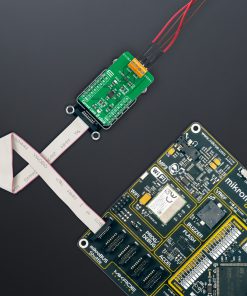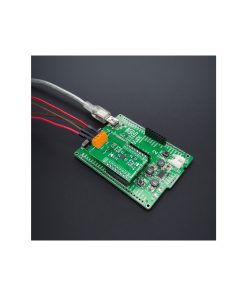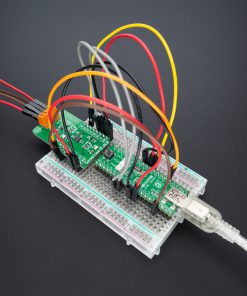Current Limit 5 Click
R265.00 ex. VAT
Current Limit 5 Click is a compact add-on board representing a current-limiting solution. This board features the MIC2099, a current-limit power distribution switch from Microchip Technology. This Click board™ represents a programmable current limit solution with various protection features and fault indication, which operates from a 2.5V to 5.5V input voltage range. Also, the current limit is adjustable from 100mA up to 1.05A programmed through the MCP4561 digital potentiometer. This Click board™ is suitable for applications in portable equipment and condition monitoring or power supplies, protecting them in short circuits or other overload conditions.
Current Limit 5 Click is supported by a mikroSDK compliant library, which includes functions that simplify software development. This Click board™ comes as a fully tested product, ready to be used on a system equipped with the mikroBUS™ socket.
Stock: Lead-time applicable.
| 5+ | R251.75 |
| 10+ | R238.50 |
| 15+ | R225.25 |
| 20+ | R216.77 |

